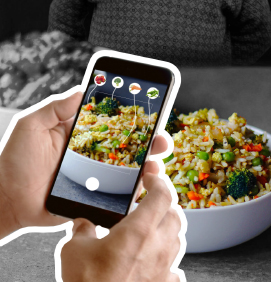HOORIYA KAZMI
•
VIVIAN KINUTHIA
•
JEANNA MANGUBAT
•
STENZO MARTIN
• BROOKE PEARSON
•
TAPENGA PEART
•
ADEL STAVITSKY
•
SOPHIE TWAROG
SUSTENANCE + SYNERGY
Supporting Food-Security Initiatives + Social Connectivity
SUSTENANCE + SYNERGY
Supporting Food-Security Initiatives + Social Connectivity
Community Anchor & Social Services/Experience
Through community services based on gardening and cooking, locals improve their relationships with one another and create a more connected and engaged community.
Through community services based on gardening and cooking, locals improve their relationships with one another and create a more connected and engaged community.
Opportunities for Education (Agricultural & Cultural)
Local organizations seek to promote wellness, sense of belonging, and community through their programming. Gardening provides an environment for these existing programs to conduct consistent and engaging linguistic, cultural, and lifestyle education.
Local organizations seek to promote wellness, sense of belonging, and community through their programming. Gardening provides an environment for these existing programs to conduct consistent and engaging linguistic, cultural, and lifestyle education.
Access to Greenspace & Health and Affordable Food
The community coming together to provide a healthy neighborhood with the ability of affordable food within a green environment.
The community coming together to provide a healthy neighborhood with the ability of affordable food within a green environment.
Integrated Local Economy
Integrating food security programs would not only provide reasonably priced foods for lower income members of the community, but would create an active interdependence between organizations to boost a local economy. Connecting local resources provides more job opportunities and builds resilience among small business owners.
Integrating food security programs would not only provide reasonably priced foods for lower income members of the community, but would create an active interdependence between organizations to boost a local economy. Connecting local resources provides more job opportunities and builds resilience among small business owners.
How Might We…
... Create welcoming and safe spaces for people to use year-round for cooking/gardening?
… Address tensions that may arise from cultural differences that could affect the intended positive impacts of shared gardens?
... Involve community consultation to identify the needs of the neighourhood?

Name: Azaadi
Age: 18
Gender: Male
Ethic Background: First Native, Metis
Personality: Family Oriented, Curious, Eager
Information:
-
Undiagnosed mental illness
-
Looking for a social connection being recluse and distant
-
Takes care of younger siblings (needs to cook for them)
-
Need of reconnection to his roots/history/tradition. This related back to medicine and anything involved with gardening.
-
Food literacy, Learn to cook and help provide for his family
School and sports (extracurricular activities)
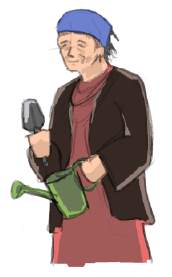
Name: Yeshe
Age: 70
Gender: Female
Ethnic Background: Tibetan
Personality: Determined, Community Oriented, Curious
Information:
-
Not fluent in English
-
Recent arrival (2018)
-
Previously lived in home with garden, now adjusting to living in an apartment building
-
Enjoys gardening
-
Learn and understand the culture and improved relationship with youth
-
Contribute to local community and make friends with classmates in ESL class
-
ESL Learner, Life Long Refugee, Gardening
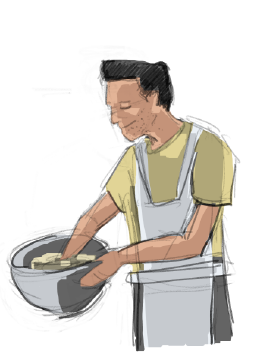
Name: Garab
Age: 53
Gender: Male
Ethnic Background: Tibetan
Personality: Hardworking, Hilarious, Optimistic
Information:
-
Owner of a local mom and pop run restaurant – Tibet on Queens
-
Great customer outreach; made it a priority to respond to every review (good or bad)
-
Spending more on his business than he’s making
-
Attempting to raise enough and sponsor his kid’s immigration to Canada
-
Expose people to Tibetan Cuisine
-
Establish a successful business
- Customers who are uneducated about Tibetan culture/food practices leaving negative reviews and jeopardizing the business reputation
Before
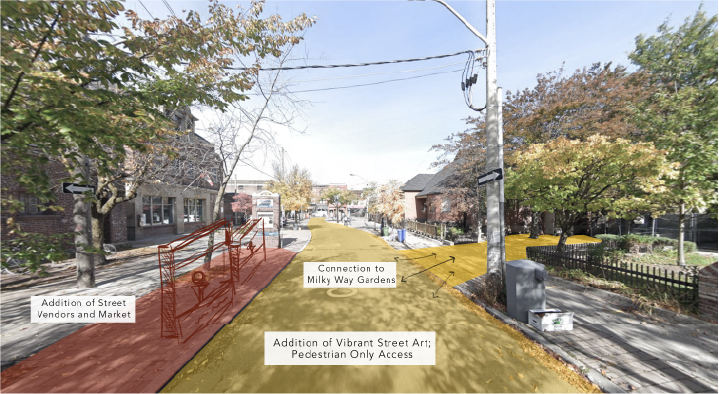
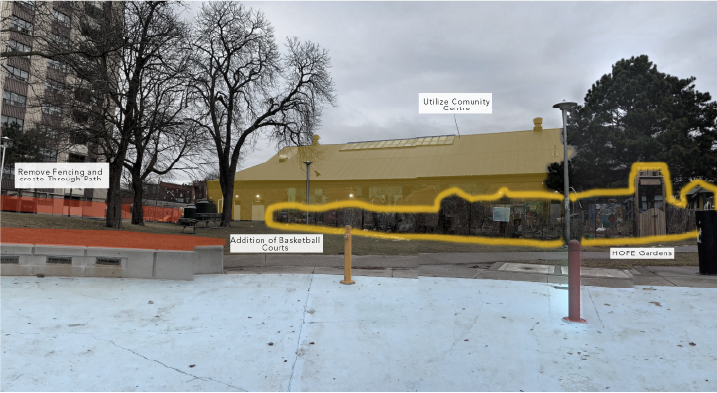

Existing Resources
![]()
Scope of Potential Interventions
![]()
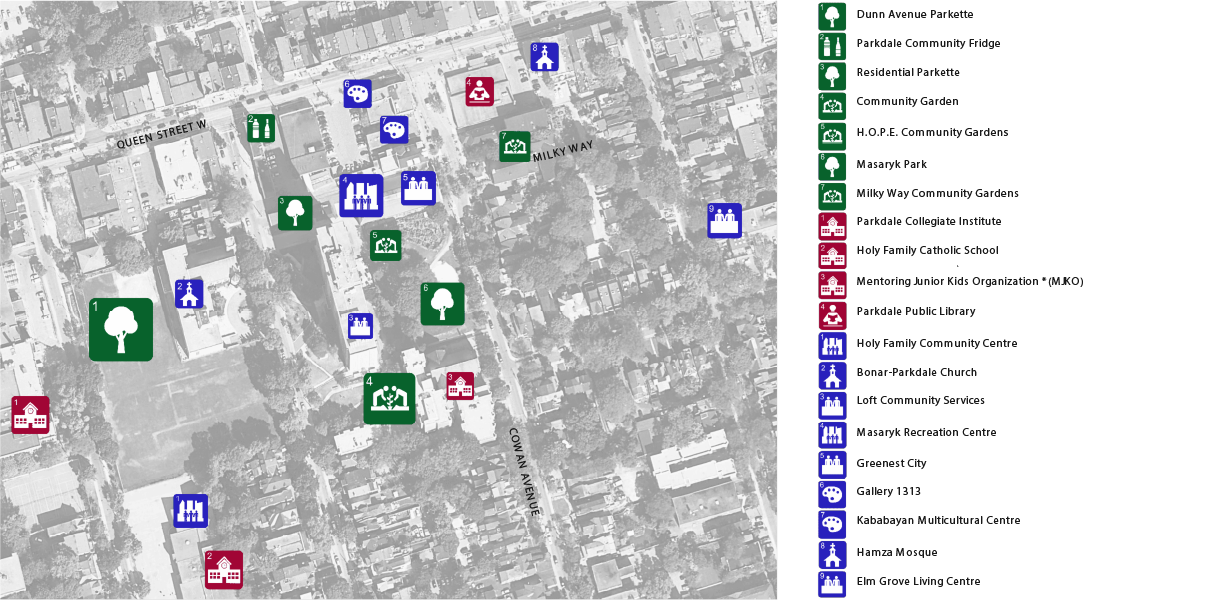
Scope of Potential Interventions
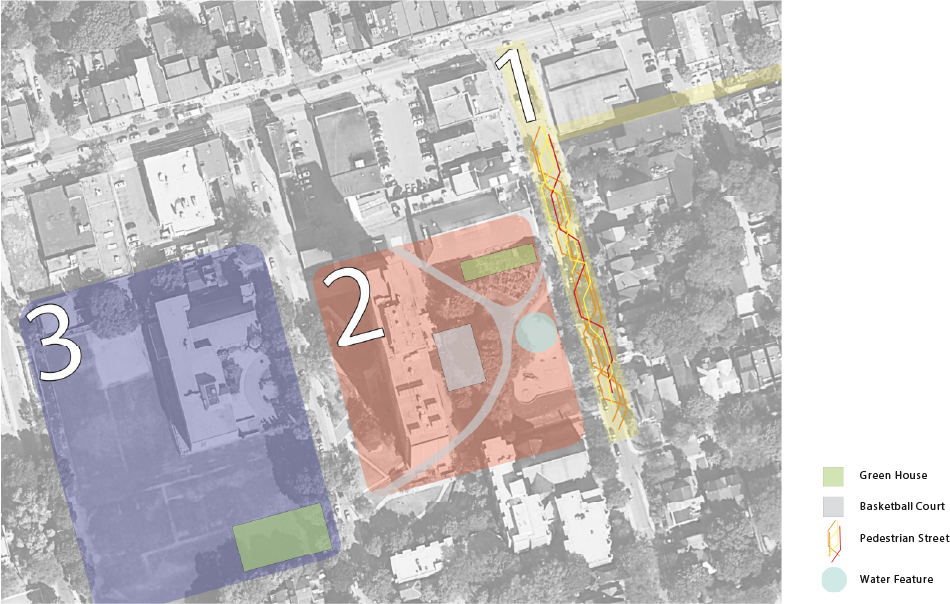
Scenario Diagram
Mapping target group interactions to establish approaches to address shared needs and desires.
![]()
Mapping target group interactions to establish approaches to address shared needs and desires.


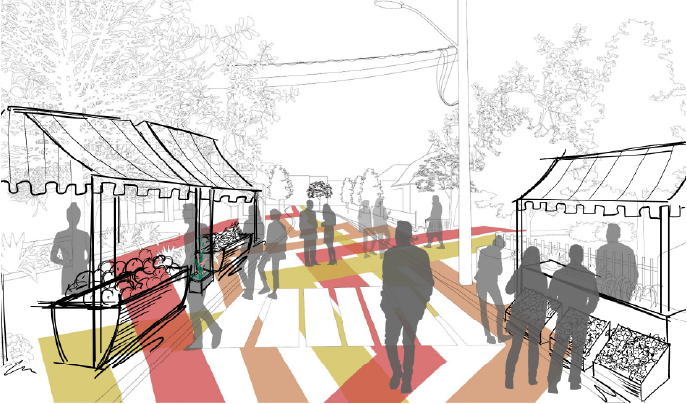
Cowan Ave & Milky Way: Scenario showing the before and after of Cowan street in the next 10 years or so. The proposal is to close off Cowan Ave from Queen St until Melbourne Ave. This improves community relations and creates a pedestrian based streetscape with the potential for the implementation of pop- up kitchen and market space. This promotes interaction between the residences of the neighbourhood. The community is able to be involved in this intervention by choosing the colours of the street paving, taking care of the modular planters and the organization of the pop up shops.
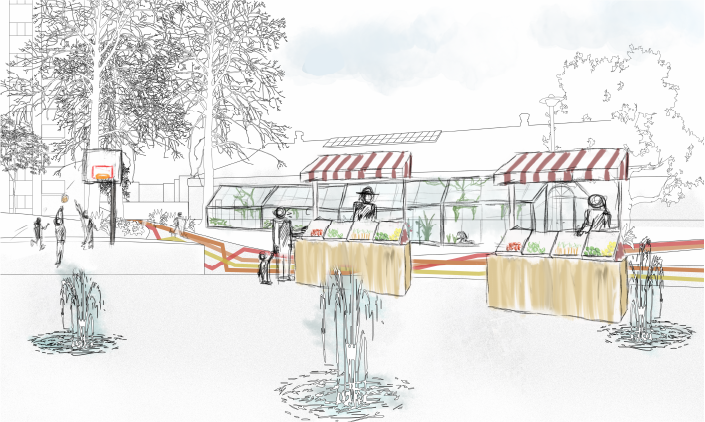
Masaryk Park: More community events and social services in a revamped park may bring more participation to help grow the gardening/food community. This scenario shows a market place right off of the current garden, and the organic food process which will proceed from garden, to preparation and then to the plates of the neighbourhood. The community is able to pilot this intervention with pop up shops, kitchens and eating spaces for local events. This design intervention provides a casual and affordable way for the community to interact.
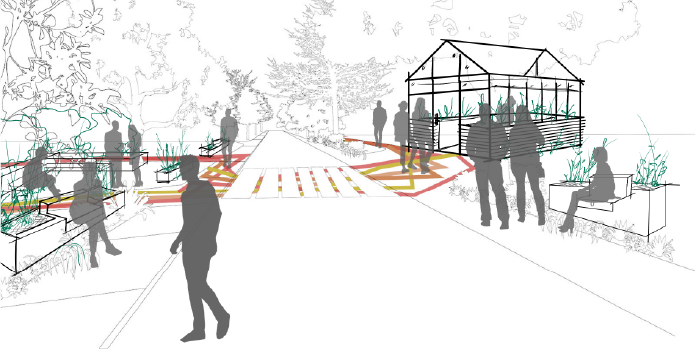
Dunn Ave Parkette: This initiative looks to create a year round space for gardening and urban agriculture through the intervention of a greenhouse structure. This would provide food security year round, a communal space for gatherings and events, and improve the overall experience of the locals in the neighbourhood. The greenhouse will also look to establish itself alongside the existing church to utilize the pre-existing resources and services.
Centralized
Decentralized
USE OF LANEWAYS
- Laneways have the potential to act as inviting, educational and social spaces
- Greenery can be invited into these spaces to enhance mental and physical health
- Provided that spaces are of ample size, gardens can be implemented and follow similar initiatives as the Milky Way Community
Beside the Local Market which is an organic food store - relation in program corner condition: traffic
Beside Parkdale Collegiate Institute (potential to act as social space for students)
USE OF PARKING LOTS
- Adjacent to an art gallery
- Close to the public library which is an existing community gathering space
- On Queens St W: lots of traffic
- Dollarama being one of the largest stores in the surrounding area would be somewhere that attracts youth
USE OF EXISTING INFRASTRUCTURE
Building upon the existing infrastructure of the site and revitalizing spaces
Consider sidewalk paving, lighting, greenery, etc.
Building upon the existing infrastructure of the site and revitalizing spaces
Consider sidewalk paving, lighting, greenery, etc.
- Strong programming: library, ESL classes, home to Milky Way Garden
-
Building doesn't seem suitable to fit these needs, lacking an inviting feeling
- Could be revitalized
- Social gathering space
[decentralized] garden installations + youth
[centralized] urban farm + communal hub
HUI SHAN CAO
•
MARY KRISTIN SAN JUAN GOZUM
•
VENESSA CHAN
•
DEYUAN SUN
•
JIALING LI
•
RUIJUN QI
•
NICOLE BURDYNEWICZ
•
VANESSA PANINGBATAN-CEREZO
Sprout
Question posed: Within the neighbourhood food environment, how can we create alternative design(s) - a combination of place and experience - that connect(s) food security and health to a rich inclusive social experience?
Sprout
Question posed: Within the neighbourhood food environment, how can we create alternative design(s) - a combination of place and experience - that connect(s) food security and health to a rich inclusive social experience?

The site for the main hub was selected as an extension of the Masaryk-Cowan Community Recreation Centre, which is directly next to a park and community garden, but has no formal kitchen. The hub would extend into the park and the space would open onto it in the warmer months. It is also near Queen street, a bustling artery and is near many public amenities like the local health centre, schools, churches, and more parks. The ‘pods’ can be located in groups or as standalone fixtures around the community. They can also be formed to make a greenhouse array, a food festival, or a communal dinner in the park.


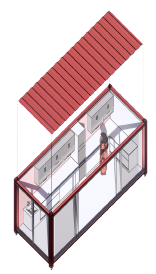
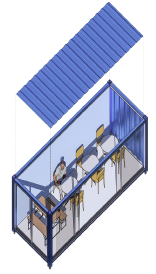
Issues: As real estate and housing costs increase, the Parkdale community and the city at large are having a hard time affording other necessities, especially food. Food insecurity leads to many issues both physical and mental. With this focus of providing more and better food, the aim of this proposal is to build off of the existing community initiatives and give power back to the people of Parkdale. With programs like the food co-op and community fridge shutting down in recent years, it is an increasingly important issue to help the community become more self-sufficient and increase food security as well as food literacy.
Implementation: This proposal includes an addition of a central food hub with a green house, community kitchen, and more flexible community space. This would be developed on publicly held land and therefore be a stable, constant hub. This provides confidence that the services will not disappear. This stability facilitates the development of more ad hoc and spontaneous installations that may border or surpass the bureaucratic control of the city. The design for these ‘seeds’, or ‘pods’, are basic, retrofitted storage containers that serve three basic functions: to produce food, prepare food, and serve food. These pods can be strung together in various configurations to serve a particular space at a particular time. These ‘seeds’ would be dispersed in the community as either a temporary installation, like a food festival, or more permanently where it can grow and evolve as residents use it. An example would be the addition of wood-palette seating or a large creative mural on the side of the ‘pod’. The spaces created between them would facilitate placemaking as the community takes over and nurtures its growth
Implementation: This proposal includes an addition of a central food hub with a green house, community kitchen, and more flexible community space. This would be developed on publicly held land and therefore be a stable, constant hub. This provides confidence that the services will not disappear. This stability facilitates the development of more ad hoc and spontaneous installations that may border or surpass the bureaucratic control of the city. The design for these ‘seeds’, or ‘pods’, are basic, retrofitted storage containers that serve three basic functions: to produce food, prepare food, and serve food. These pods can be strung together in various configurations to serve a particular space at a particular time. These ‘seeds’ would be dispersed in the community as either a temporary installation, like a food festival, or more permanently where it can grow and evolve as residents use it. An example would be the addition of wood-palette seating or a large creative mural on the side of the ‘pod’. The spaces created between them would facilitate placemaking as the community takes over and nurtures its growth
Partnerships: The community could partner up with existing programs in the city, notably Scadding Court, which modifies and sells shipping containers fully outfitted with services and can be customized. People within the Parkdale community could learn and help manufacture them creating a cross-neighbourhood collaboration. Another organization, the Bowery Project, can help provide more, though temporary, growing land with the use of milk crates. They typically take over empty building sites before construction begins, providing fresh produce in the process. Intra-community partnerships would also be imperative, especially with the numerous community gardens, the Parkdale Queen West Community Health Centre, which has a long list of programs, as well as the local schools and churches. The ‘pods’ can be used, developed, and maintained by the community at large to continuously serve the needs of the community.
Barriers: The intervention ‘pods’ are meant to act as temporary or semi-permanent installations that can be shifted around when necessary, either by community need or because of external forces. The ‘seeds’ are a form of tactical urbanism on a large community scale as a sort of protest on the part of the community for the purpose of taking back control of their neighbourhood in the face of gentrification. Rather than formally asking for permission, space for these installations are taken over. It is therefore very useful to be able to move these structures around with little notice. Wheels would be designed into the ‘pods’ so that they could be towed or pushed out of the way when absolutely needed. The pods being storage containers, would also make them durable and lockable.
Barriers: The intervention ‘pods’ are meant to act as temporary or semi-permanent installations that can be shifted around when necessary, either by community need or because of external forces. The ‘seeds’ are a form of tactical urbanism on a large community scale as a sort of protest on the part of the community for the purpose of taking back control of their neighbourhood in the face of gentrification. Rather than formally asking for permission, space for these installations are taken over. It is therefore very useful to be able to move these structures around with little notice. Wheels would be designed into the ‘pods’ so that they could be towed or pushed out of the way when absolutely needed. The pods being storage containers, would also make them durable and lockable.


The chosen target audience is that of immigrant families. As this community continues to function as a landing pad for newcomers, the community already has a number of services catered to them like ESL classes. This proposal aims to help newcomers bond, teach, and learn from existing community members with a focus on food. The idea of the sharing ideas rather than assimilation is a core idea in this design with movable food preparation kitchens where people can cook together, as well as greenhouse pods where food from different countries can be grown, and can pop up right where it is needed most, close to community members. These services are mirrored in the main hub on a larger and more stable scale.
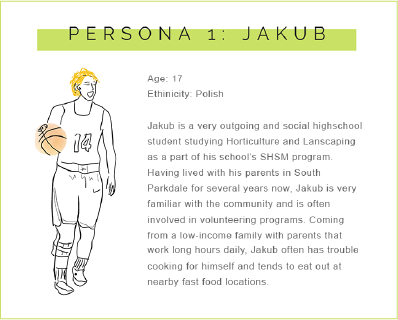


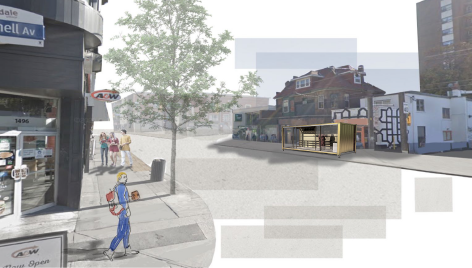
Jakub is often buying his meals from Big Chain Fast Food Restaurants due to its convenience and pricing. He does not pay much attention to the healthy quality of the food he eats, leading to poor food literacy skills. On the way back from A&W, he notices the food pod.

Aaron is new to the neighbourhood and new to his school. However, none of his peers knows that he suffers from some mental health issues due to the food insecurity at home. He is often alone and finds it difficult to connect with his community. When walking his dog Tomato, he notices the these pods along the street.
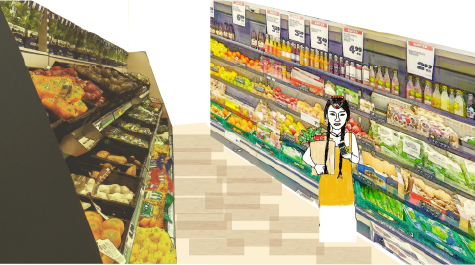
Amala has just settled in Canada with her daughter and husband. She works double shifts but still cannot afford daycare for daughter. Due to her financial food insecurity, she is limited to purchasing discounted goods in a supermarket. She is looking for affordable food to purchase.

Amala learns about the free after school cooking programs offered at the Food Hub where her daughter learns how to cook dishes, garden, and bring home the dishes and fresh ingredients. Amala and her daughter enjoy the free meals and decide to participate in the upcoming Multicultural Food Festival. In preparation, Amala spends some time helping in the garden.
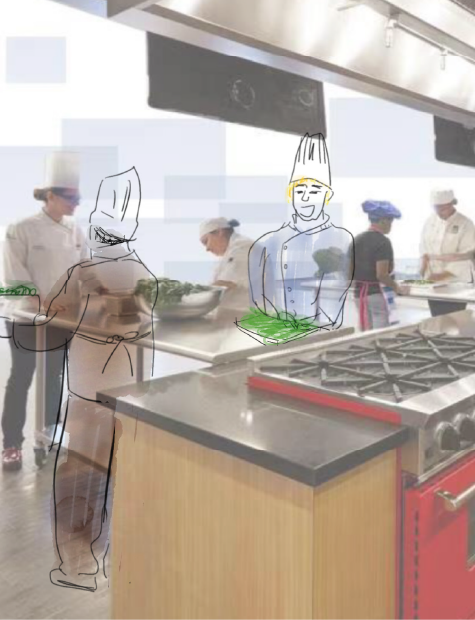
Jakub and Aaron approach the food pods and learn about all the various cooking opportunities in the neighbourhood. They both decide to participate and learn new cooking skills. Jakub is learning how to cook his own healthier dishes, and Aaron made a new friend. Both of the boys are starting to overcome their food insecurities.
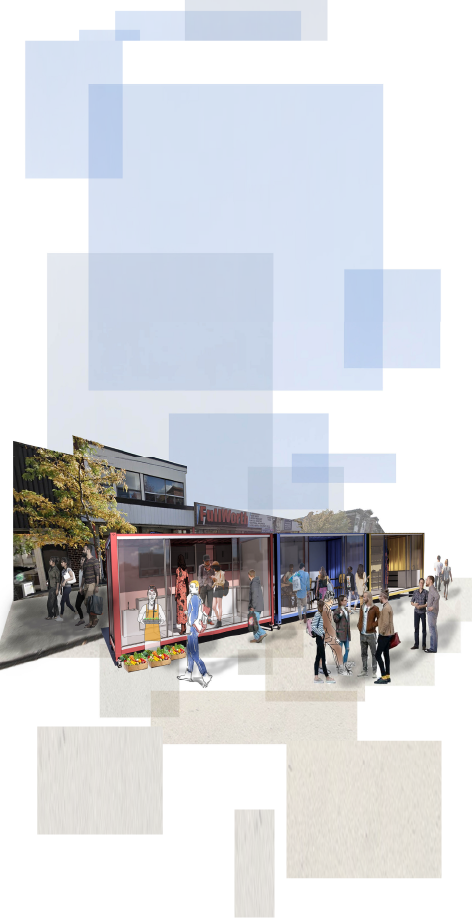
Jakub, Aaron, and Amala attend the Multicultural Day Festival. Jakub participates as a volunteer, learning about all the new dishes he can make! Aaron is connecting with his community members through food. Amala was able to use the free produce to create dishes to sell at the event. They are starting to overcome their food insecurities and learn about the existing programs in their community.
Cultivation Station
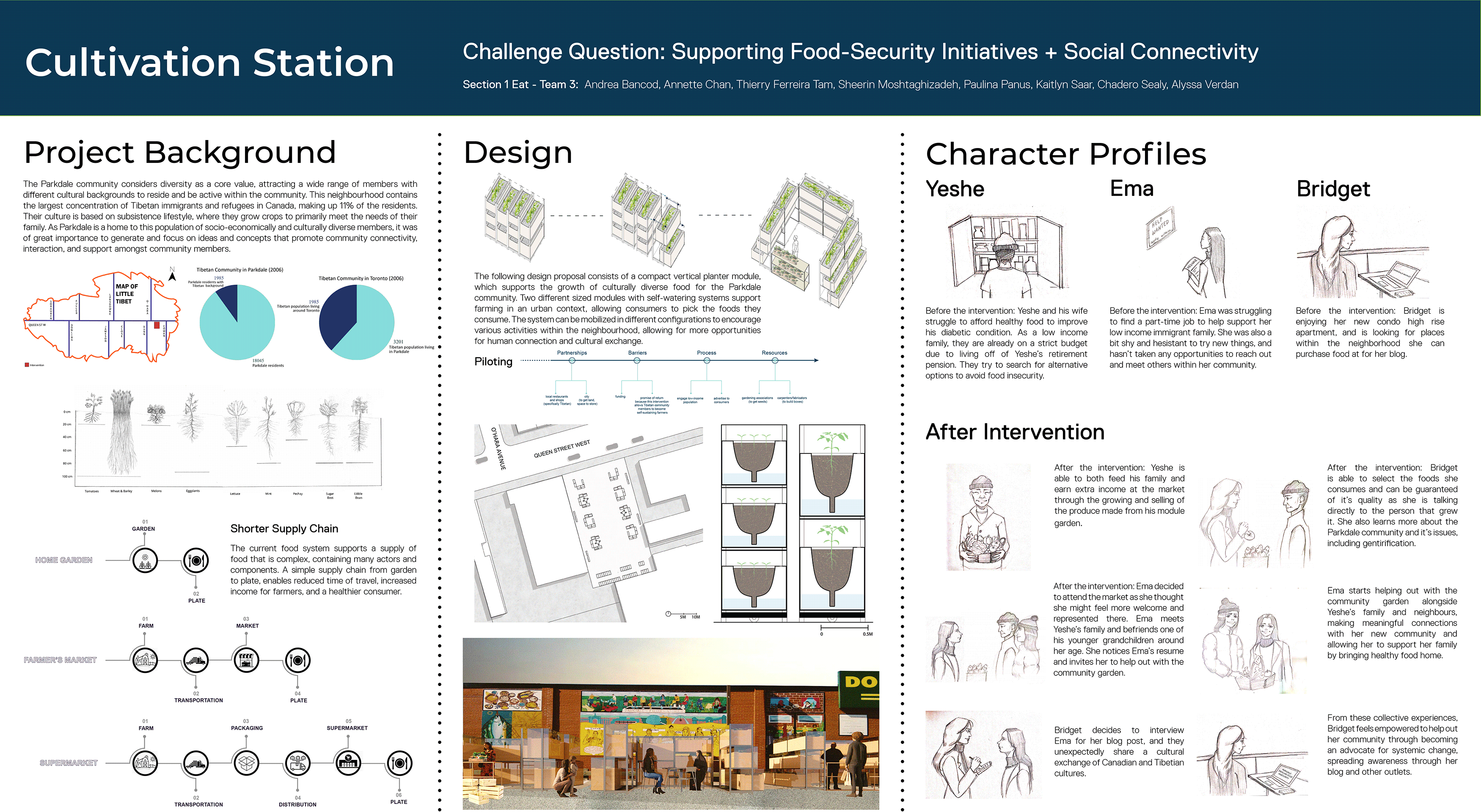
URBAN FARM RE-INVISION
Theme
Revisioning food distribution in urban neighbourhoods in the categories regarding food security, education and community wellness.
Problem
Parkdale is a community with a varied range of age groups, and a variety of cultural backgrounds. The average family income within the community is below the poverty line. Due to the increasing rents and stagnated income, community members are directly impacted by food insecurity challenges.
Solution
Our goal is to make sure the neighbourhood has an even distribution of high-quality, healthy foods. As well as providing a place/ program for discussion, sharing of culture and experiences leads to feelings of inclusivity. Combining a food hub and greenhouse with educational programs such as volunteering and job opportunities, childcare centres, and workshops for gardening and cooking. The greenhouse can provide year-round vegetables available for members neighbourhood, allowing individuals to access healthy, and high-quality nutrition. Workshops for gardening and cooking provide job/ volunteering opportunities for individuals who need it. As well as providing food to people who aren’t able to cook or do not have access to the kitchen.



CHARISSA PAULINE MEDRANO • VINCENT MA • KELVIN HOANG • LALA LEUNG • TAK LUNG STEVEN CHEUNG • CYNTHIA HUA • AUSTIN CHRISTOPHER HENDY • ADEEB MUNAS
Parkdale Produce Initiative
Supporting Food-Security Initiatives + Social Connectivity
Question posed: Do you think the integration of technology allows for a further reach of users?
![]()
Parkdale Produce Initiative
Supporting Food-Security Initiatives + Social Connectivity
Question posed: Do you think the integration of technology allows for a further reach of users?

PROCESS
Key Themes (Most important -> least important)
Key Themes (Most important -> least important)




Opportunities
- Potential to reshape the identity of Parkdale
-
First urban 'farming' on an impactful scale (Toronto)
-
Intervention for food security, which could greatly positively impacts the
local community
-
Opportunity for a foothold for the existing culture
-
A chance to create an opportunity for greater integration and connection within the people of Parkdale
- Drives economic activity within the local community
- Youth education which mutually benefits the cause as well
Challenges
- Building infrastructure requires upfront capital investment
- Differences between cultures could be too great (conflict)
- Issues of farming proximity to urban infrastructure (pollution)
- Agricultural activity at its nature consumes large amounts of area
- Risk of little to no crop yields, depending on climate (assuming no greenhouse), staff/personnel, and funding
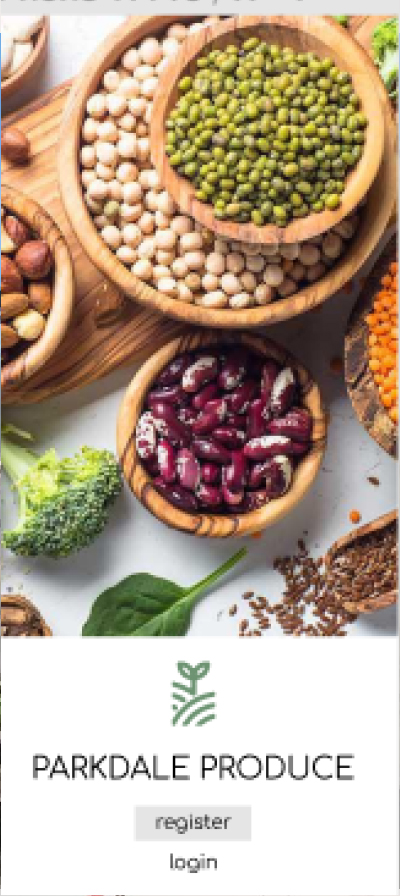

Centralized


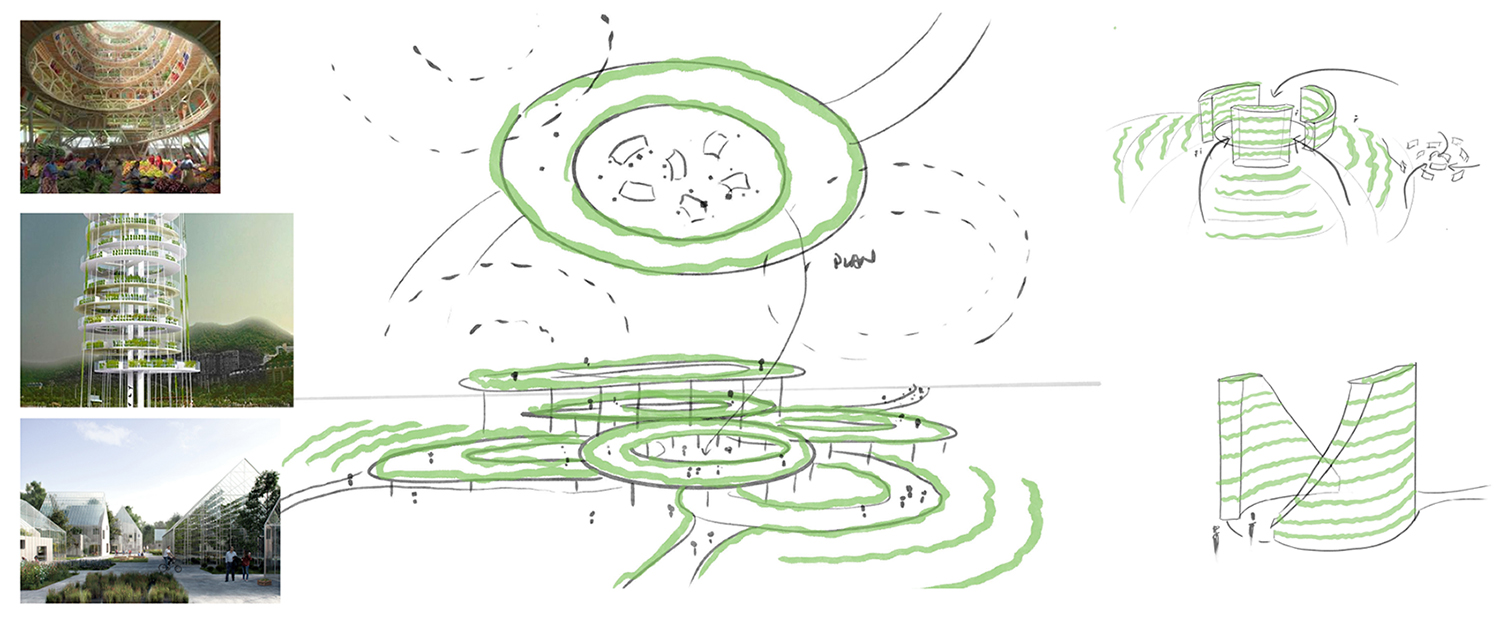


Decentralized


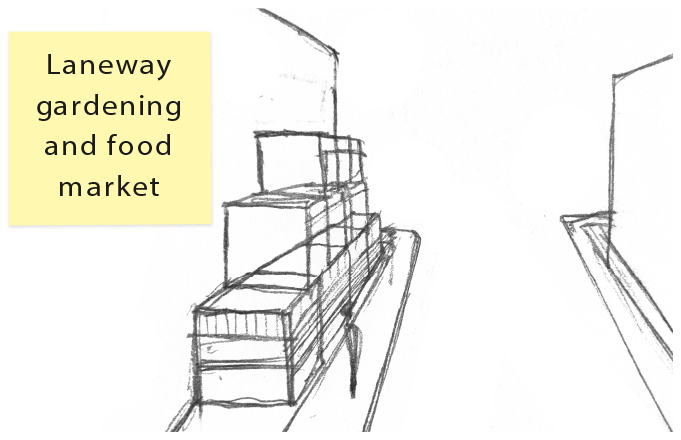


USE OF LANEWAYS
- Laneways have the potential to act as inviting, educational and social spaces
- Greenery can be invited into these spaces to enhance mental and physical health
- Provided that spaces are of ample size, gardens can be implemented and follow similar initiatives as the Milky Way Community

Beside the Local Market which is an organic food store - relation in program corner condition: traffic


Beside Parkdale Collegiate Institute (potential to act as social space for students)

USE OF PARKING LOTS
![Parking Lot on Queens St W near the public library]()

- Adjacent to an art gallery
- Close to the public library which is an existing community gathering space
- On Queens St W: lots of traffic
- Dollarama being one of the largest stores in the surrounding area would be somewhere that attracts youth

USE OF EXISTING INFRASTRUCTURE
Building upon the existing infrastructure of the site and revitalizing spaces
Consider sidewalk paving, lighting, greenery, etc.
Building upon the existing infrastructure of the site and revitalizing spaces
Consider sidewalk paving, lighting, greenery, etc.
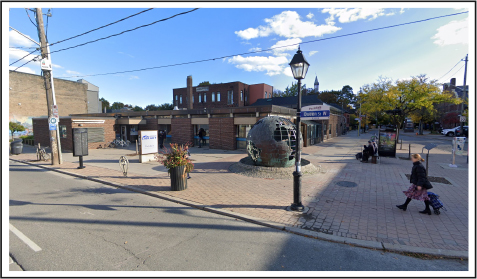
- Strong programming: library, ESL classes, home to Milky Way Garden
-
Building doesn't seem suitable to fit these needs, lacking an inviting feeling
- Could be revitalized

- Social gathering space


[decentralized] garden installations + youth







[centralized] urban farm + communal hub






